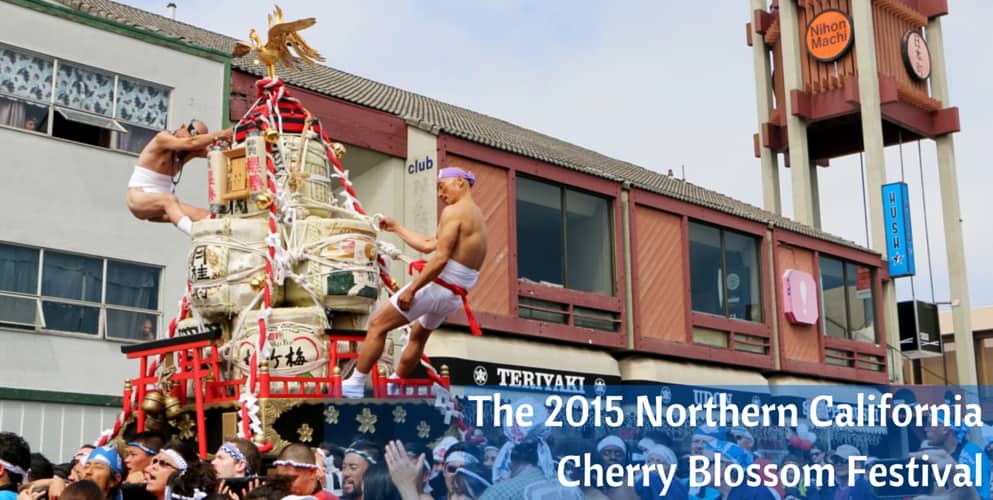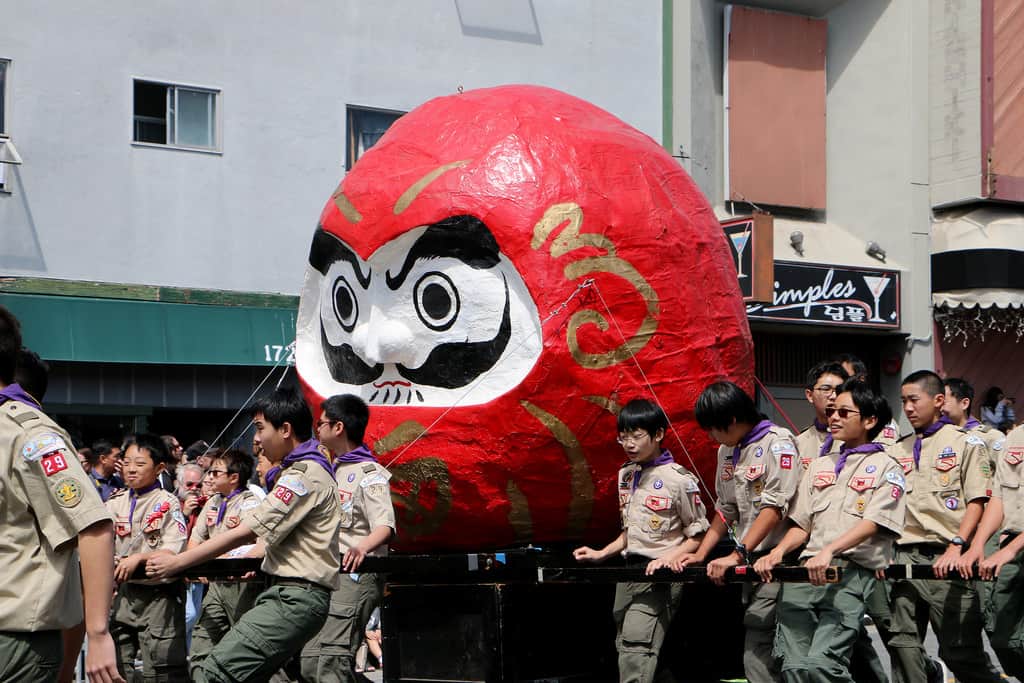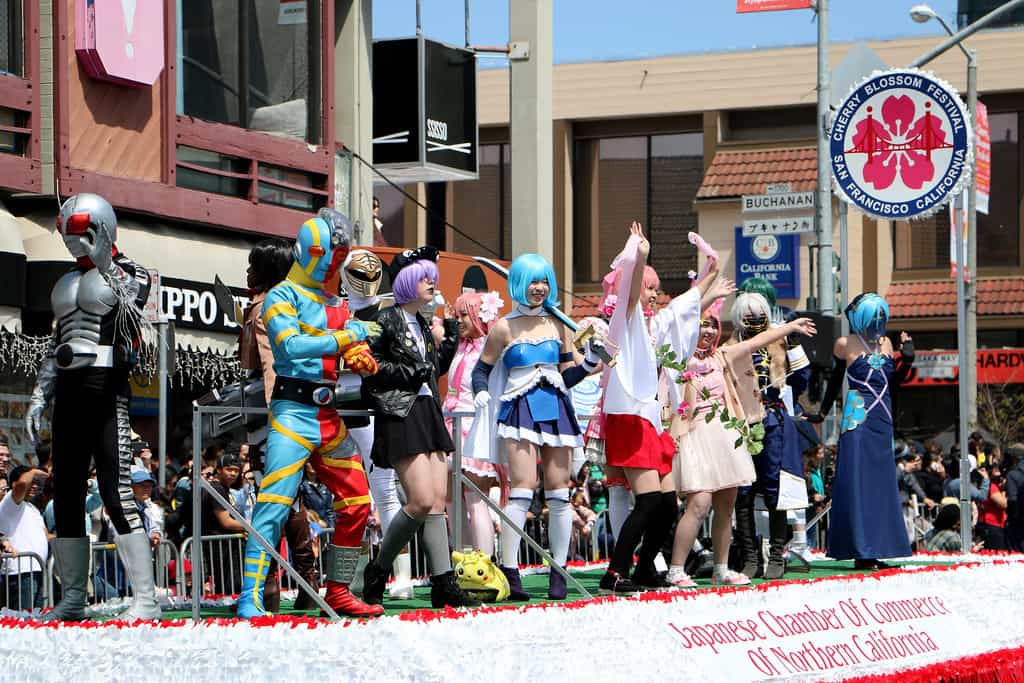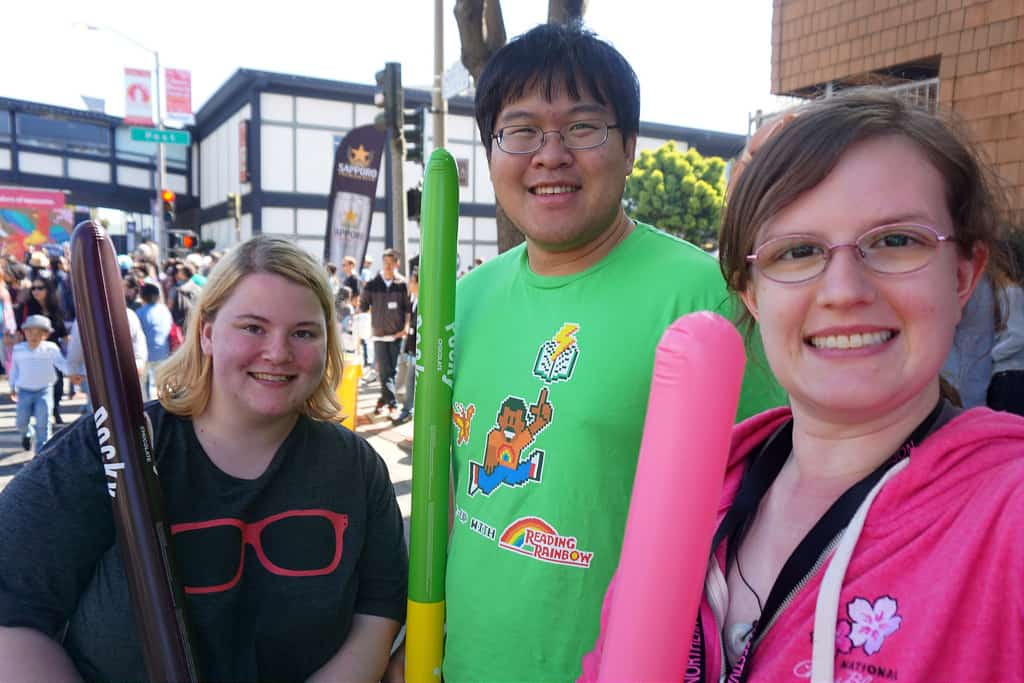#Findingasia
#FINDINGASIA: THE NORTHERN CALIFORNIA CHERRY BLOSSOM FESTIVAL

The Northern California Cherry Blossom Festival is said to be the second largest cherry blossom festival in the U.S. after the National Cherry Blossom Festival in Washington DC.
So after spending a week in blossom-filled DC, I packed my bags and made my way to sunny San Francisco.
Held in one of the country’s three remaining Japantowns, over 200,000 people fill this six square-block event each year. Yet despite this, it still didn’t feel nearly as claustrophobic as in DC.

This year was the 48th year of the festival and it took place over two weekends– on April 11-12th and 18-19th.
Unlike in Washington DC, I was happy to see that this cherry blossom festival was 100% free to the public and had no general admission. Of course you had to pay for any food and souvenirs, but all of the performances, workshops and even tea ceremonies were free of charge.
Also unlike in Washington DC, this cherry blossom festival sadly had no cherry blossoms. While there are a small amount of cherry trees located around Japantown (like, less than ten), they sadly were way past their peak and only had a few blossoms left on the branches.
>>> HERE ARE THE BEST PLACES TO SEE CHERRY BLOSSOMS IN THE US <<<

That’s not to say that this festival wasn’t fun though– because it was! Just don’t go there specifically for the blossoms or you may be disappointed.
Without blossoms and the arrival of spring to celebrate, the festival was more so a celebration of all things Japanese. From anime to calligraphy and bonsai, they did a good job representing all aspects of Japan’s unique culture through various performances, demonstrations and workshops.
You could spend the day listening to the sounds of taiko, learn about all the Japanese societies around the Bay Area, or even mingle with Domo-kun, who like me must’ve also caught the plane from DC. 😉
There was even a whole section dedicated to kids with fun activities for them to take part in, complete with a Hello Kitty fun bounce.

Music and the scent of freshly prepared food filled the air, as it should at any good festival.
Walking past a section of food vendors, it was hard to pass it all up– especially when I saw the takoyaki stand. Mmm, takoyaki.

But tempted as we were, we had our hearts — and stomachs — set on only one thing: the Hello Kitty Cafe Truck.
This year marked the first year that this Southern California food truck joined the festival. Featuring an array of adorably-delicious treats, it was no surprise that the line stretched over two blocks long.

Yup, that’s right, people waited for up to two hours in order to buy a rainbow of macarons, perfectly fashioned petite fours, donuts with those iconic red bows on them, and other Hello Kitty-themed sweets.
And so did we.

Meanwhile, those with a little more sanity (or lack of young Sanrio-loving children) enjoyed the Sapporo beer gardens, the beautiful sunshine, and what we can only assume were karaoke competitions comprising only of the song Uptown Funk.
After spending all of Saturday afternoon at the festival, we found ourselves returning Sunday morning for the Grand Parade, which made its way to Japantown from City Hall.
While I hadn’t planned to stay the entire duration of the parade, I found that the quality of participants and performances kept me there until the end.




The great thing about the Bay Area is that it’s actually home to a sizable Japanese population and active Asian community.
Unlike the parade in DC, which was comprised mostly of corporation-sponsored floats, local dance teams and maybe one or two Japanese cultural performers, the parade at the Northern Cherry Blossom Festival actually featured tons of Japanese American societies and culture.
They even had a large number of performers flown in from Japan to put on traditional buyo performances and minyo folk dances representing all different regions of Japan.




The highlight of the parade was no doubtably its finale featuring the Taru Mikoshi.
Mikoshi (神輿) are portable Shinto shrines that deities are believed to reside in. They look like elaborate palanquin and are often used in festivals across Japan or more traditionally to transport deities when moving shrines.
It was believed that carrying the mikoshi would get rid of any bad luck or demons that one might have and shaking it when being carried spreads blessings to those around it. Because of this, many people want to carry the mikoshi.
Sounds easy enough right?
Well, a single mikoshi typically weighs hundreds of pounds.
They’re meant to be painful and to challenge those who carry them. I mean, after all, riding yourself of demons and receiving blessings shouldn’t be so easy, right?
Made from a pyramid of nine sake barrels topped with a golden Hou Oo (phoenix), San Francisco’s Taru Mikoshi weighs over 1,000 pounds and requires over 150 people to carry it.


If you’d like to help carry the mikoshi in future parades, it is open to anyone who is over 18. And really, it’s a great experience that I highly recommend as it’s considered a rite of passage in Japan. Painful, but great.
The Taru Mikoshi was originally donated by Kanda Myojin, a temple located in Tokyo, back in 1967. Each year a purification ceremony conducted by Kanda Myojin priests takes place on the Saturday before the parade.
Teams chanted washhoi, washhoi as they work together to vigorously bounce the mikoshi up and down through the streets of San Francisco. You could see the sweat and determination on their faces as they passed by.
All the crowds lining the street cheered the teams on as the leaders hung off the mikoshi, tossing it about from side to side. The energy was infectious and the perfect way to pump up the crowd for the final day of the festival.

LET’S PIN IT!














